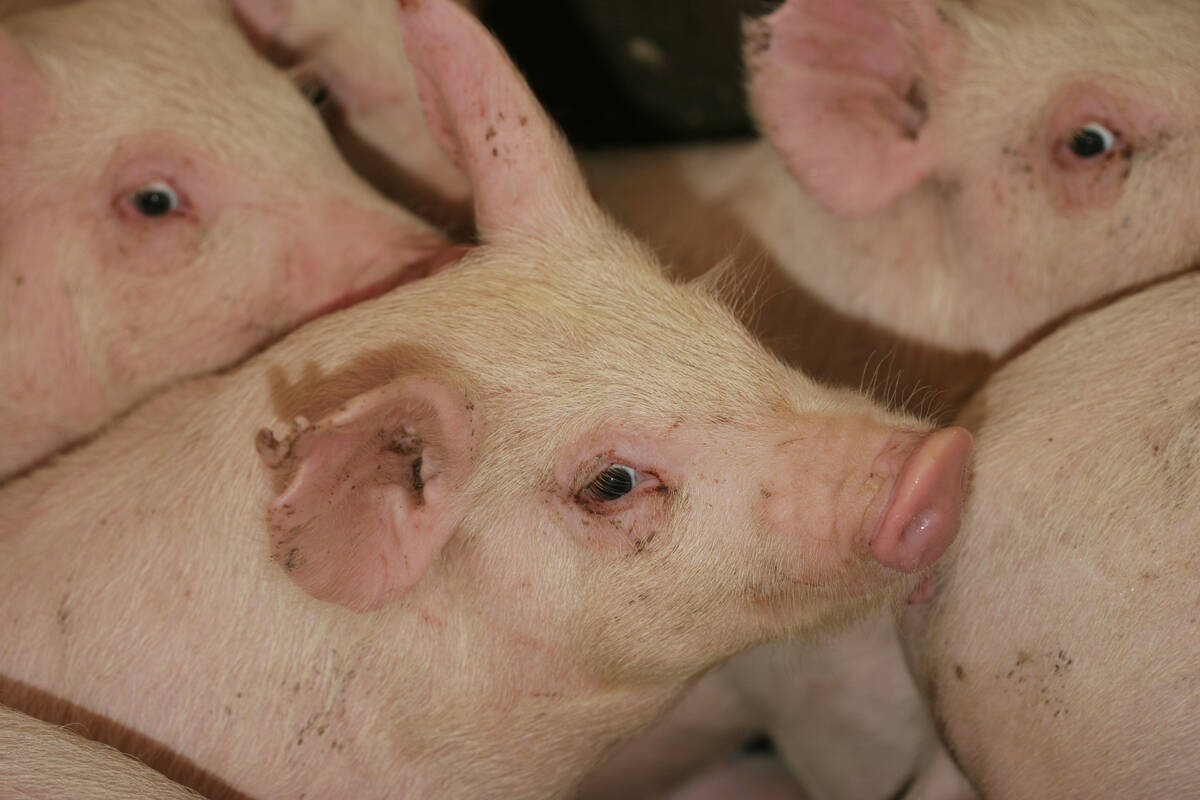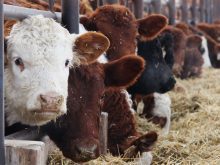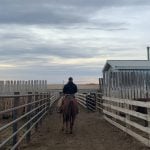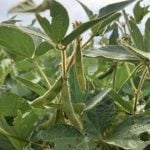EDMONTON – Len Larsen grazes a “flerd” of animals on his southern Saskatchewan ranch, combining a flock of sheep and a herd of cows.
Mixed grazing in the same pasture at the same time seems ideal for managing pasture, increasing profits and reducing predator losses.
“I think multispecies grazing is an attempt to mimic nature,” Larsen told producers during the Western Canadian Grazing Conference Dec. 4.
Larsen grazes about 900 ewes and 100 cattle on his 2,100 acres of seeded grassland at Rouleau, in the middle of southern Saskatchewan grain country. The farm slowly evolved from grain to cattle with the sheep added for profit.
Read Also

The Western Producer Livestock Report – September 25, 2025
The U.S. national live price average for barrows and gilts was $81.21 Sept. 17. It was $78.37 Sept. 9. U.S. hogs averaged $106.71 on a carcass basis Sept. 17, up from $106.10 Sept. 9.
He said one of the biggest advantages of multispecies grazing is having a different income stream. Lambs are sold at a different time of year than the calves, with little extra cost to the existing operation.
The calves are born in June and weaned in the spring. The lambs are born in the spring, but weaned in the fall.
Canada produces only 45 percent of the lamb consumed domestically. An easy way to meet the growing demand for Canadian lamb is to have cattle producers add sheep to their cow herds, Larsen said.
“They’re simply another grazing unit,” said Larsen, who estimates he can add one ewe for every cow and not change the forage available to cattle when grazing grass, or three sheep to one cow when grazing brush land.
“What they choose to eat doesn’t overlap. Sheep don’t compete with cows.”
Sheep are selective grazers. With their split lip, they have the ability to pick a leaf off a blade of grass. Cattle take a whole bite and eat whatever comes with it, new or dead grass. The combination of the two grazing systems creates an ideal mix, he said.
“As you add species, you get more stability and produce a greater number of salable products off the same ground. They complement, not compete.”
Grazing as a group can cause some roadblocks, especially with mineral consumption. The copper requirements are different for sheep and cattle, but can be solved by not using high-copper salt blocks.
“It’s not an issue that can’t be overcome,” said Larsen, who generally uses cattle mineral because it’s cheaper than sheep mineral.
He has also adapted cattle facilities for handling sheep. An ear notching system is used to tell the age of each animal and a cull mark notched in the ear indicates problems with the animal.
Larsen uses only electric fences on the property. The boundary fence is a three-wire hot fence and two-wire electric fences are used for internal lines.
“We don’t have a huge problem with sheep getting out because we move them quite often,” he said.
The flerd is moved at least every seven days.
Feeding cattle and sheep together can be a nutritional balancing act. Sheep have generally low nutritional requirements until six weeks before lambing and immediately after lambing. Larsen said he tries to time lambing for June when the grass is at its highest nutritional level.
Predator control is less of a problem with the mixture of cattle and sheep, as long as the sheep are bonded to the cattle.
“When they get frightened, they’ll run to the cows,” he said.
Larsen also used two types of guard dogs – slower moving dogs that stay with the animals and the breeds that tend to roam outside the pasture and keep coyotes away.
At the first sign of an animal loss, Larsen focuses on coyote control. The size of the pasture is reduced to help the dogs look after the flock and Larsen goes hunting.
“It doesn’t matter if I’m haying. They can cost me more money than anything I’m doing at the time. A bad coyote will continue and teach other coyotes that sheep are a viable food source.”
Larsen said he picks up any dead animals and has an agreement to pick up any of his neighbours’ dead animals to stop coyotes getting a taste for sheep.
“We don’t suffer a huge loss at lambing because the cattle are so protective.”














